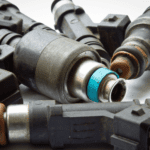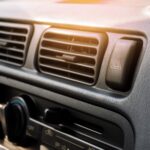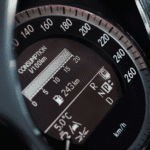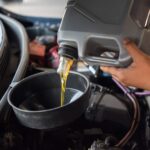Wouldn’t it be nice if the car manufacturers designed an exhaust that never went wrong? Although there is no denying they have improved over the years, they still don’t go without their problems. So it’s important to be aware of the signs and symptoms of an exhaust that is broken or is at least about to be.
Symptoms of a Broken Exhaust
1. Noisier exhaust
A loud noise coming from your car’s exhaust system could be a perfect sign, and the immediate one everybody is aware of it needs to be replaced. This noise could be caused by various factors, such as a damaged, worn, rusted, or malfunctioning catalytic converter. The tone of the exhaust can change subtly from a minor exhaust leak; you might only hear a more profound tone change to the exhaust when revving the engine, so just to be aware, the noise isn’t always deafening.
The mufflers, also known as silencers, reduce engine noise and filter the noise and pollutants at the back of the car. If they become damaged or worn out, they can no longer perform this function correctly, which you will notice. Similarly, a cracked or rusted hole in the exhaust pipe can cause air to escape, making the exhaust extremely loud.
Not one that everyone usually associates with a failing exhaust but the catalytic converter can also amplify the sound of exhaust when it becomes clogged, or the internals breaks away.
2. Strange noises
Strange noises that don’t make exhaust any louder are also a good indication the internals in one of the mufflers or catalytic converter are failing. Noises you may hear are:
- Raspy noise on acceleration
- Popping sounds (backfiring) when letting off the gas pedal
- chugging sound (clogged catalytic converter forcing air out a join between a gasket)
3. Reduced fuel efficiency
The catalytic converter, a part of the exhaust system, contributes to the air/fuel mixture being put into the engine for combustion. It works through the o2 sensors on either side of the catalytic converter. The o2 sensors work by sensing the number of pollutants, unburnt air (oxygen), and fuel before the catalytic converter and then again after and telling the car to make any necessary adjustments to the explosive mixture of air/fuel.
Two things can happen in the exhaust that explains the reduced fuel efficiency. One, the exhaust leaks before the catalytic converter, which causes havoc with the reading as the sensors get an incorrect amount of gasses passing through them. The other is the internals of the catalytic converter failing either by a blockage or the catalyst breaking down.
4. Check engine light on
The check engine light may be on because of either a catalytic converter fault detected by the o2 sensors or an exhaust gas leak in front of the catalytic converter towards the engine, causing a problem for these sensors.
It can also just be the o2 sensors themselves not working correctly. The o2 sensors can be replaced independently and don’t require the exhaust to be replaced if they become faulty. Still, they do tend to rust into the exhaust, making it tricky to remove them without them snapping the pipe or ruining the threads on their way out, so a section of the exhaust might have to be replaced just to replace a sensor.
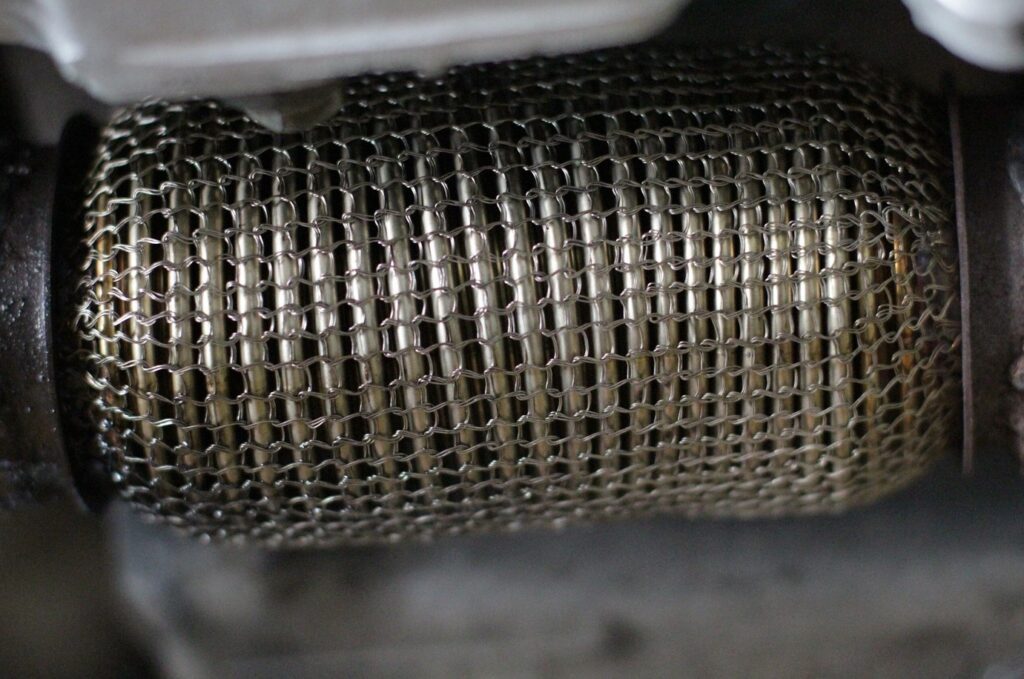
5. Reduced engine performance
If you notice a reduction in engine performance, especially the oomph at the low end of the rev range, it may indicate something wrong with the exhaust, specifically a leak. The exhaust system is designed to maintain a certain level of backpressure, which is necessary for the engine to perform correctly. This is because the backpressure helps to optimize the airflow through the engine. Losing it through a leaking exhaust can affect the engine’s ability to generate power when accelerating.
6. Burning smell
If you can sense a burning smell in the cabin, it’s a good indication there might be a problem like an exhaust leak or a blocked catalytic converter. Exhaust gasses are filtered out the back of the car to stop us from smelling and inhaling the toxic gasses. Smelling them in the cabin means the gasses are escaping somewhere they shouldn’t be. Exhaust gasses get into the cabin through tiny holes for wiring in the floor and the firewall.
7. Rattling
A rattling noise coming from the exhaust might be something as simple as the heat shield being loose, which means the exhaust doesn’t need replacing and the heat shield needs resecuring. The bad news is that there are a few other parts to the exhaust which can cause a rattle which would indicate the exhaust or a piece need replacing:
- Silencing baffles in the muffler loose
- Catalytic converter internals broken
- Rust rattling around in mufflers (either from the pipework or the muffler)
- Broken metal hangers
8. Vibrations
There are a couple of different vibrations caused by an exhaust on its way out. One is the broken flexi joint, a part of the exhaust allowing for movement when under acceleration. If it were a solid pipe through to the back, it would snap if engine when the engine is thrown around under gear changes. When the Flexi is weak, the exhaust can be forced upwards at the back, causing the muffler to touch the back of the car. Sometimes you might hear a banging noise every time you go over a bump, but other times; it’s evident as the exhaust vibrating on the car’s underside.
Another time is when the catalytic converter has failed or is blocked. The pressure builds as more gasses are forced into the exhaust; because it’s blocked, the exhaust starts to shake violently, and the gasses are forced out of any joints in front of the catalytic converter; this is usually evident as the check engine light will illuminate and you can hear and feel the vibrations.
9. Hanging down
If your exhaust looks to be hanging lower than it should, it could indicate that one of the metal brackets attached to the exhaust and used to hold it in position has broken. They are primarily welded to the exhaust, so sometimes, depending on the exhaust condition, they can be welded back on.
It could even be a simple rubber mount that is suspended from the underside of the car on a bracket and holds the vehicle in place. This would mean the exhaust doesn’t need replacing, just the rubber mount does, and they are straightforward to replace as most of them push onto the hangar.
10. Hair coming out the rear muffler
It’s strange to see if you’ve never seen it before, and what looks like long human hair coming out of the muffler is a sign that the silencer’s internals is falling apart. The ‘hair’ is used to pack the muffler internals between the silencers (the silencers look precisely like a machine gun silencer), and its function is sound deadening. When the hair comes out, it tells you the baffled silencer tube has rusted through, and the hair can then make its way to the nearest exit through the tip of the muffler.
Causes of a Broken Exhaust
Age
Not much is built to last forever. This includes exhaust. You must remember that if the manufacturers designed an exhaust that never needed replacing, they would lose money in the spare parts business(not an accusation, just an observation).
Exhausts are commonly constructed of stainless steel, semi-stainless steel, and other metals, which means they rust with age. The exhaust is open to the elements underneath the vehicle, so water, chemicals, and road salt get onto the exhaust and cause corrosion to metals that shouldn’t fail in the time an exhaust generally does.
Poor installation
Because a new exhaust, when replaced, comes in multiple different sections, they require lining up and fixing into position. If poorly or incorrectly fitted, the exhaust can hang, knocking on the car’s floor or the road when going over bumps causing damage. Additionally, when incorrectly fitted, to much stress on one part of the exhaust because it is incorrectly lined up will cause that part to fail more quicker than expected.
Damage
Direct impact from a car crash or debris in the road can damage an exhaust system. The pipe doesn’t need much of an impact for it to bend. You then get weak points on the exhaust where the metal has stretched, which means the exhaust can snap at any time.
Also, repetitive scraping of the exhaust when going over speed humps, from either driving too fast over them or exhaust hanging down too low, wears through the metal and will introduce a leak of exhaust gasses.
Gasket failure
The gaskets and fittings seal sections of exhaust together, some of the gaskets are a ball and socket type joint to allow for movement, but over time the gasket wears down. You might think it’s just a simple gasket replacement, but the gaskets made from other metals can cause a reaction to the metal flange of the exhaust, so you take the gasket out to find the flange falls apart due to rust. Most of the time, you get away with just replacing the gasket.
Blockage
Different areas of the exhaust cause blockages. The catalytic converter can block because the honeycomb of precious metals inside starts to break away and clog up. The other cause is silencing baffles inside the muffler rust (usually the center section of the exhaust) and starts to break apart; the little pieces of rusty metal get caught in sound-deadening hair wrapped in the exhaust and begin to push their way into the pipe, a build-up occurs. More rust is fired into the ball of fur, which causes a blockage.
Any weak parts of the exhaust are then prone to breaking quicker because of the build-up of exhaust gas pressure because of a blockage.
Can You Drive With a Bad Exhaust Muffler?
It’s possible to drive with a bad exhaust muffler if it doesn’t impede you from driving. For example, suppose the hair is coming out the back of the muffler or the internals is rattling. In that case, it’s not causing so much of a problem, and the exhaust tone will have changed, but driving will not cause any immediate issues, so you could continue until the exhaust falls off, not that you’d want it to leave it until that point.
However, if the exhaust muffler hangars have broken and the muffler is flapping in the wind, its a danger to other road users as it could come away and hit another vehicle, and that’s not without talking about the damage it might do other parts of your car. In this case, driving is impossible, and you shouldn’t continue.
Although, if you can remove the muffler and put it in the trunk because it has snapped, you could, in theory, drive to the nearest point for repair, but the exhaust will be extremely loud.
Final Thoughts
Although it’s good general car knowledge to be aware of symptoms of a broken exhaust for when and if problems occur. If you find an issue with the leaking exhaust gasses (the most common issue), it would be wise to read the following article: how long can you drive with an exhaust leak?


